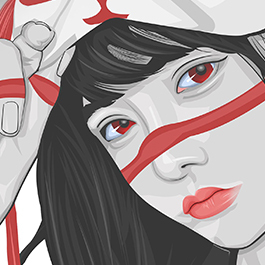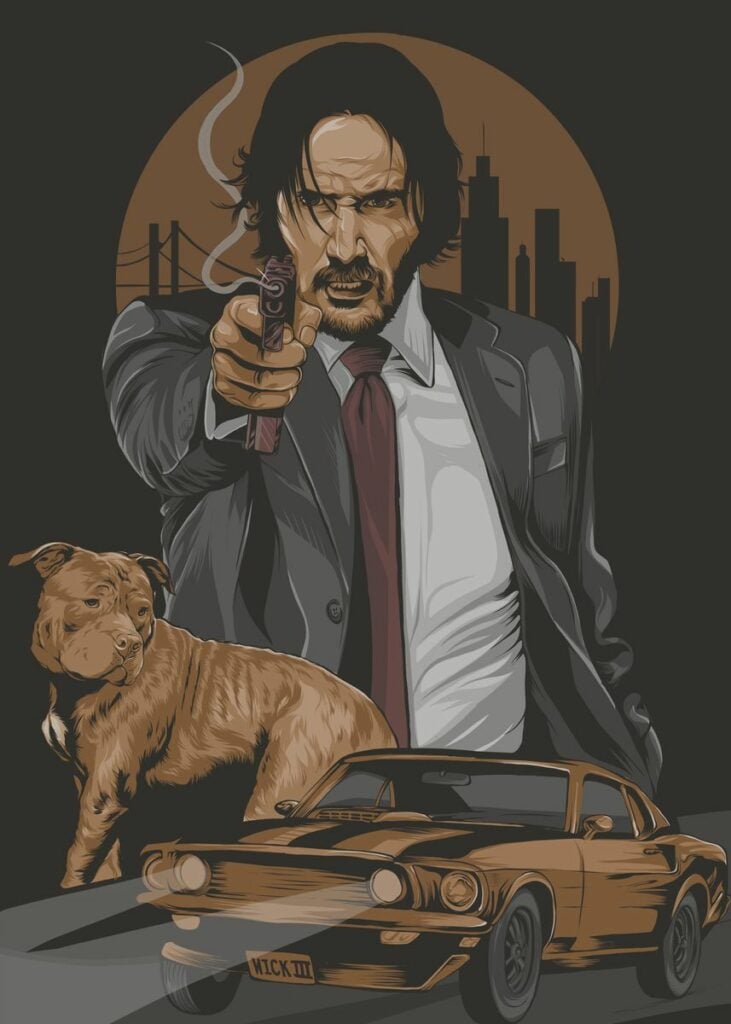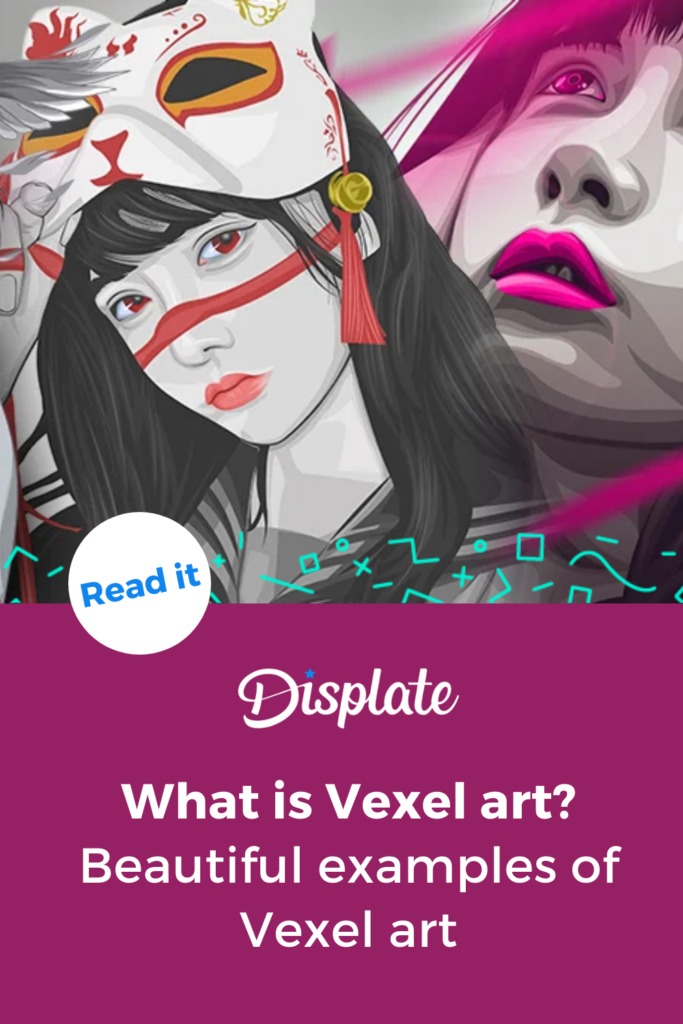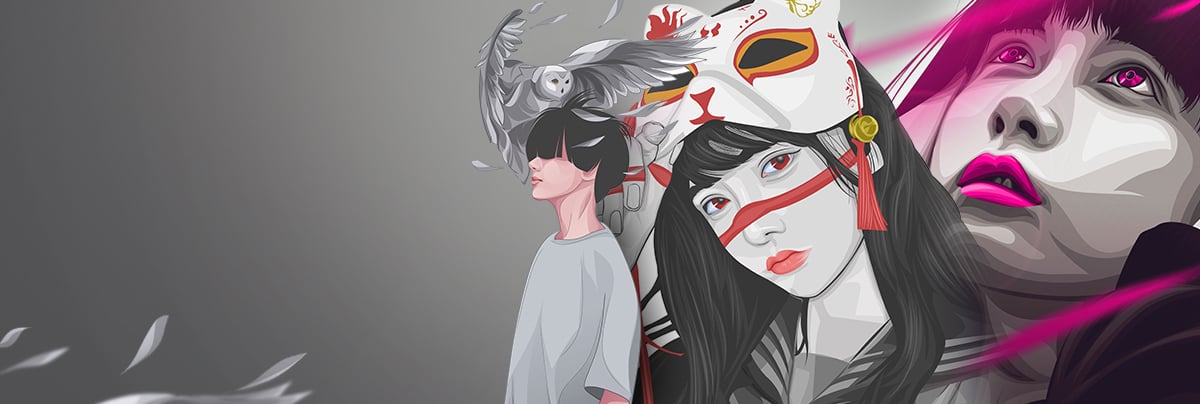
Vexel art is a technique of making pixel-based raster art that imitates the visual appearance of the vector graphics technique. To truly understand what vexel art is, however, one must first know the basic principles behind raster and vector graphics. This knowledge will make it easier to understand how vexels can mimic vector graphics while being a raster technique. So let’s dive in.
Vexel art is a technique of making pixel-based raster art that imitates the visual appearance of the vector graphics technique. To truly understand what vexel art is, however, one must first know the basic principles behind raster and vector graphics. This knowledge will make it easier to understand how vexels can mimic vector graphics while being a raster technique. So let’s dive in.
Vexel (Raster) vs. Vector Graphics
Vector graphics are images where individual elements, like points, lines and curves, are plotted on a Cartesian plane. Thus, in vector graphics, every point is defined by specific coordinates relating to that plane. This makes vector graphics scalable to both lower and higher resolutions with no aliasing (i.e. blurry or pixelated edges). In addition, vector graphics can also define smooth color gradients. Vector image file formats include: SVG (Scalable Vector Graphics), EPS, PDF, and AI.
Meanwhile, vexel graphics are raster images, meaning that the image is saved in the form of a bitmap, where every pixel is defined separately. In contrast to vector graphics, raster images cannot be scaled up without edges being blurred. Here’s a fun fact: raster comes from the Latin word rastrum, meaning rake. Imagine raking lines in the sand, first horizontally, then vertically. The resulting grid should give you a good idea of how raster graphics work. Raster image file formats include: JPEG, PNG, GIF and MPEG4.
Here are some comparisons of vector and raster graphics:
What Does Vexel Mean?
So what is the difference between a vector and a vexel? As mentioned in the previous paragraph, vexel graphics are raster images, which do not upscale without loss of apparent quality, whereas vector graphics have a completely different file format and do not lose quality when upscaled to higher resolutions. If you’re looking for a definition of vexel, according to Wikipedia:
“Vexel is a neologism for an entirely pixel-based form of raster art that imitates the visual appearance of vector graphics technique (i.e. sharp-edged lines and areas of flat colour or smooth gradient fills). The word itself is a portmanteau derived from a combination of ‘vector’ and ‘pixel.’”
In other words, vexels are pixels or groups of pixels that have been modified to resemble vector graphics in terms of color and shape transitions. They can even be used to make photo-realistic art!
What is Vexel Art and How Do You Make It?
Now that you know what the difference between a vexel and a vector is, you may be asking yourself, “How do people imitate the appearance of vector graphics using vexels? How is it possible to emulate vector graphics while working with raster graphics?” Vexel artists use layers to endow individual pixels with certain properties, thereby creating what is known as a vexel. To do this, you will need image editing software like Photoshop or any other image editing software that has a good Pen Tool. Such image editing software must support transparent layers, because they are necessary for making vexels.
To put it in simplified terms, vexel art is created by making solid (or gradient) shapes in individual transparent layers, and then displaying them in an order that creates a color transition. This color transition is gradual, but in contrast to vector graphics, individual steps can be seen, especially at higher magnifications, depending on the resolution in which the vexel image was created.

Another way to make vexel art is to create a vector image and then rasterize it with a high resolution. Further manipulations of the raster image are then required to create vexels. This is a rather roundabout way of making vexel art, but some artists have achieved amazing effects using this method.
The Resolution Dilemma in Vexel Art
Since vexel art is effectively still a raster graphics technique, the resolution of the image is quite important to the final effect and scaling possibilities. When it comes to publishing vexel art in print media, this can be a real issue, and vexel artists usually address it by creating vexels at very high resolution. This way, the image would have to be magnified by a lot before blurry lines and pixelation start to show up.
Learn How to Make Vexel Art
If vexel art is something you’re interested in, you might want to check out one of the many tutorials out there. They teach a variety of vexel techniques in different software environments, with the most popular one being photoshop, and using different tools, particularly the pen tool. Here are some great vexel tutorials to get you started:
- https://www.deviantart.com/verucasalt82/art/Something-Red-Walkthrough-25521333
- https://design.tutsplus.com/tutorials/create-a-complete-vexel-image-using-photoshop–psd-260
- https://www.deviantart.com/donbenni/art/Vector-Tutorial-v2-16419597
Examples of Beautiful Vexel Art
Vexel art is a budding trend in graphic design, and some artists have already gained fame by making outstanding vexel images. Many vexel art pieces are portraits, but there are also mood pieces and scenes in daily life, even cars. The possibilities are endless, and your imagination is your only limitation, as is usually the case when it comes to art. Take a look at the vexel art examples below and find your inspiration.



